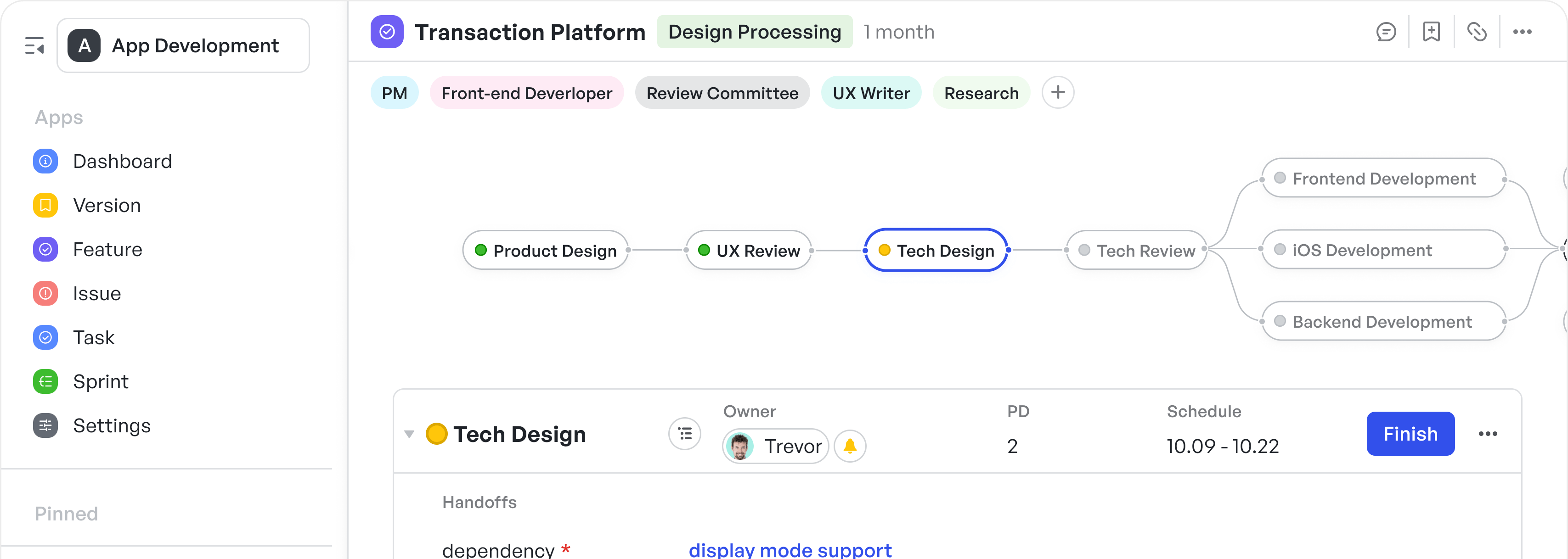What is Scrum in Project Management?

Scrum is often classified alongside project management methodologies like Agile and Waterfall. But does that really make it a methodology? Not exactly.
Scrum is a lightweight Agile framework intended to help people, teams, and organizations tackle complex problems by delivering value in small, manageable increments. It is based on the principle of empiricism: the idea that one learns best through experience.
 Reddit user explains Scrum in project management briefly
Reddit user explains Scrum in project management brieflyAccording to the 16th State of Agile Report, 87% of organizations using Agile methodology have adopted Scrum: a dramatic jump from just 58% in 2021. It is a sign of how widely Scrum has been adopted across industries like finance, healthcare, retail, and government.
As more teams move away from rigid, traditional project management methods, many are turning to Scrum for its flexibility and results.
In this article, you’ll learn what Scrum in project management really is, how it works, and how to apply it. We’ll also show you how Meegle’s visual boards, real-time updates, and built-in automation make it simple to adopt Scrum’s practices and keep your team aligned, agile, and continuously improving.
What is Scrum in project management?
Scrum is a framework that follows the Agile project management methodology, helping Scrum teams deliver value incrementally through short, focused cycles called sprints. Instead of planning the entire project upfront, Scrum breaks work into short sprints where team members plan, build, test, and iterate based on continuous feedback.
The Scrum framework was developed in 1995 by Ken Schwaber and Jeff Sutherland. They introduced it as a response to the challenges of managing software development projects in complex environments.
The name “Scrum” was borrowed from rugby. It describes a tightly coordinated formation of players working together to gain possession and move the ball forward (how a Scrum team collaborates to reach shared goals). Since then, it’s evolved into one of the most widely used Agile frameworks across industries.
Scrum gives project teams a simple structure with defined roles, events, and artifacts, while leaving room to adjust and improve based on what’s actually happening during the project. This balance between its approach and adaptability is a key reason Scrum works so well in software development projects, where change is constant.
Scrum vs. Agile vs. Waterfall: What are the differences?
Choosing the right project management approach often comes down to understanding how Agile, Scrum, and Waterfall differ—and which one fits your team's goals and workflow.
Agile is a mindset guided by the Agile Manifesto, which emphasizes flexibility, team collaboration, customer feedback, and continuous improvement. Scrum is a specific Agile framework used to put those values into practice. Waterfall, on the other hand, is a traditional project management methodology that follows a strict, step-by-step process from start to finish.
Here’s a quick side-by-side comparison:
| Aspect | Scrum | Agile | Waterfall |
|---|---|---|---|
| Definition | An Agile framework utilizing short, fixed-length sprints to facilitate iterative development and deliver regular increments of value. | An iterative and incremental approach to project management that emphasizes flexibility, continuous adaptation to change, and collaborative delivery. | A sequential, linear project management approach where each development phase must be completed before the next phase can begin. |
| Approach | Iterative & incremental | Iterative, adaptive mindset | Sequential, plan-driven |
| Planning | Short-term sprint planning every 1–4 weeks | Continuous planning at varying levels | Detailed upfront planning for the entire project |
| Roles | Product owner, Scrum master, developers | No fixed roles; teams choose roles as needed | Project manager lead; functional teams execute phases |
| Artifacts | Product backlog, sprint backlog, increment | Varies by framework (e.g., backlogs, user stories) | Requirements docs, design specs, test plans, final deliverable |
| Flexibility | High – scope adapts at each sprint based on feedback | High – embraces change throughout the project | Low – changes usually require formal change requests |
| Feedback Loops | Built-in: Daily Scrum, Sprint review, Sprint retrospective | Encourages regular feedback via demos, retrospectives | Typically at phase-gate reviews |
| Risk Handling | Risks are identified and addressed each sprint | Risks are managed continuously | Risks addressed early; late discovery can be costly |
New to Scrum? These terms will come up in later sections, so feel free to refer back to this list as you keep reading.
Key Scrum terms to know
• Sprint: A time-boxed period (usually 1–4 weeks) of focused work.
• Product backlog: An ordered list of work (features, fixes, enhancements) to be done.
• Sprint backlog: The subset of product backlog items selected for the current sprint.
• Scrum master: A servant leader who facilitates Scrum, removes impediments, and coaches the Scrum team.
• Product owner: The person responsible for maximizing product value by prioritizing the backlog.
• Increment: A usable, potentially shippable chunk of product delivered at sprint’s end.
Now that you know how Scrum compares to Agile and Waterfall, and you’re familiar with the key terms, let's explore the principles and values that make Scrum effective.
The core values and pillars of Scrum in project management
Scrum teams follow a lean, empirical process guided by five values and three pillars. Together, these shape a culture of trust, transparency, and continuous improvement. These are not simply abstract ideas; they influence how Scrum development teams collaborate, solve problems, and grow sprint after sprint.
Let’s take a closer look at the Scrum principles and values that make this possible.
The 5 Scrum values
Scrum team members are expected to uphold five core values that shape how they work together and approach each sprint:
- Commitment: Team members are dedicated to achieving the sprint goal.
- Courage: Individuals are empowered to tackle tough problems and speak up about challenges.
- Focus: Everyone is concentrated on the highest-priority work during each sprint.
- Openness: The team is transparent about sharing progress, problems, and feedback.
- Respect: Members are trusting of each other’s skills, experiences, and viewpoints.
The 3 pillars that guide Scrum teams
Scrum theory is based on real-world learning. Teams make better decisions when they can observe what’s happening and adjust as they go.
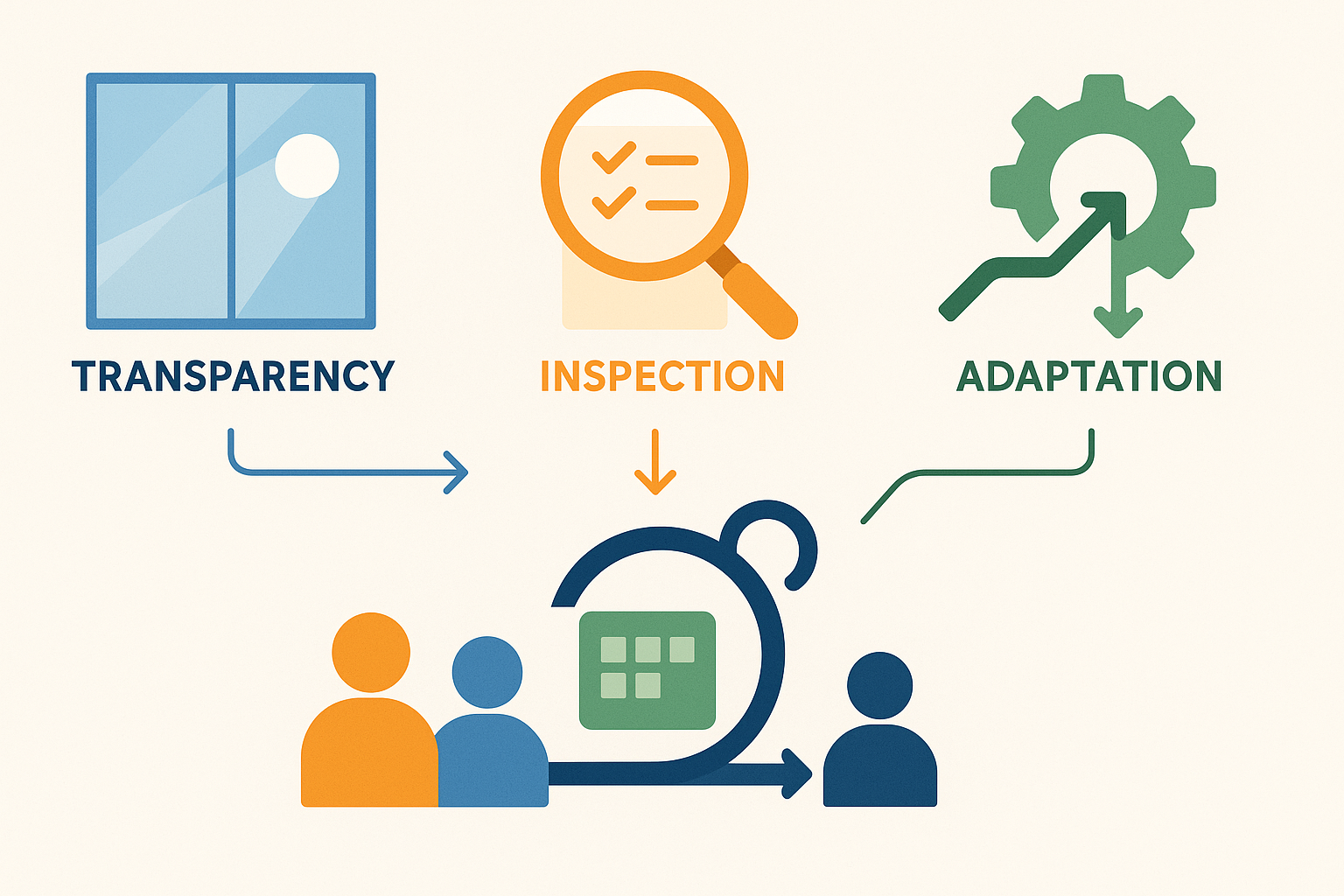 The three core principles of Scrum in project management
The three core principles of Scrum in project managementThis empirical process control relies on three core principles:
- Transparency: Everyone involved can see the real status of the work, like progress, blockers, and goals. When things are visible, multiple teams are aligned, honest about challenges, and quicker to respond.
- Inspection: Scrum includes structured events—like daily scrums and sprint reviews—that help Agile software development teams inspect progress, identify blockers early, and refine their approach.
- Adaptation: When issues are identified, Scrum teams make targeted adjustments—such as reprioritizing the backlog, refining user stories, or modifying sprint goals—to stay aligned with project needs. This responsive approach ensures steady progress and maintains quality under changing conditions.
Importance of Scrum in faster delivery and smarter feedback
By working in short cycles and continuously checking progress, Scrum teams can accelerate time-to-market and adapt to change without losing momentum. After each sprint, the software development team shares what’s done, gathers input, and reflects on how to do better next time.
These regular touchpoints help the entire team stay focused, aligned, and continuously improve their processes.
Want to learn how to implement Scrum? Find your industry here:
- Implementing Scrum in Telecom: Agile Success with Meegle
- How to Implement Scrum in Construction
- How to Implement Scrum in Automotive
- Scrum in Education: Enhance Collaboration and Student Engagement
- How to Implement Scrum in Finance: Agile Project Management for Teams
- How to Implement Scrum in Healthcare
Scrum framework overview
To implement Scrum effectively, it's essential to understand its core components: the defined roles, structured events, and Scrum artifacts that together support an iterative development process, promote transparency, and enable continuous improvement.
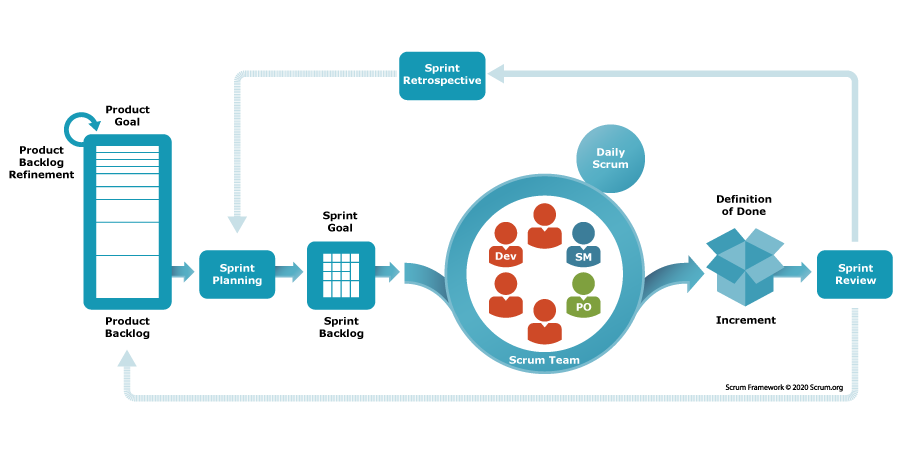 The Scrum framework (Source: Scrum.org)
The Scrum framework (Source: Scrum.org)Scrum roles
The Scrum framework outlines three core roles, each playing a distinct part in delivering value.
A Scrum team typically includes around 10 people (often seven plus or minus two) with clear responsibilities that keep work focused, collaborative, and moving forward. In a healthcare software project, they can look like this:
Product owner
Manages the product backlog. Think: ordering features, bug fixes, and enhancements to match the vision and stakeholder priorities.
Example: A product owner can move a telehealth appointment feature to the top of the backlog after feedback from doctors, putting patient use ahead of design tweaks.
Suggested read: 👉What is a Product Brief: Strategies and Best Practices
Scrum master
A servant leader, coaching the team on Scrum practices, removing roadblocks, and ensuring everyone follows the Scrum process.
Example: A Scrum master can notice the Agile team is waiting for updated clinical guidelines and arrange a quick workshop with the medical advisory board to unblock progress.
Development team
A self-organizing group of professionals who build the product increment by increment and take part in all Scrum events.
For example, in one sprint, the development team delivers a working patient dashboard that shows upcoming appointments and lab results, then demos it to clinicians for immediate feedback.
Each role in a Scrum team works with different priorities, so having a project management tool that supports those perspectives is important. A product owner should be able to reorder backlog items as priorities change. A Scrum master? Monitors team flow and removes blockers. The development team? Use clear visual tools to track their day-to-day tasks.
 Track Scrum tasks
Track Scrum tasksMeegle helps product teams do this without friction and keeps everyone aligned without switching between multiple apps.
Scrum artifacts
To make work visible and manageable, the Scrum framework focuses on three core artifacts:
- Product backlog: A prioritized list of features, fixes, and enhancements maintained by the product owner.
For example, in a manufacturing workspace, the product backlog can include tasks like “optimize packaging line sensors” or “update safety inspection checklist.”
- Sprint backlog: The subset of backlog items selected for the current sprint, with tasks broken down and ready to execute.
Example: The team can pull in work to test a new machine calibration setting and document the outcome by the end of the sprint.
- Increment: A usable, potentially shippable slice of the product delivered at the end of each sprint.
Example: This could be a tested prototype for a new assembly tool, ready for field testing or internal review.
In practice, having a visual board makes these artifacts easier to manage.
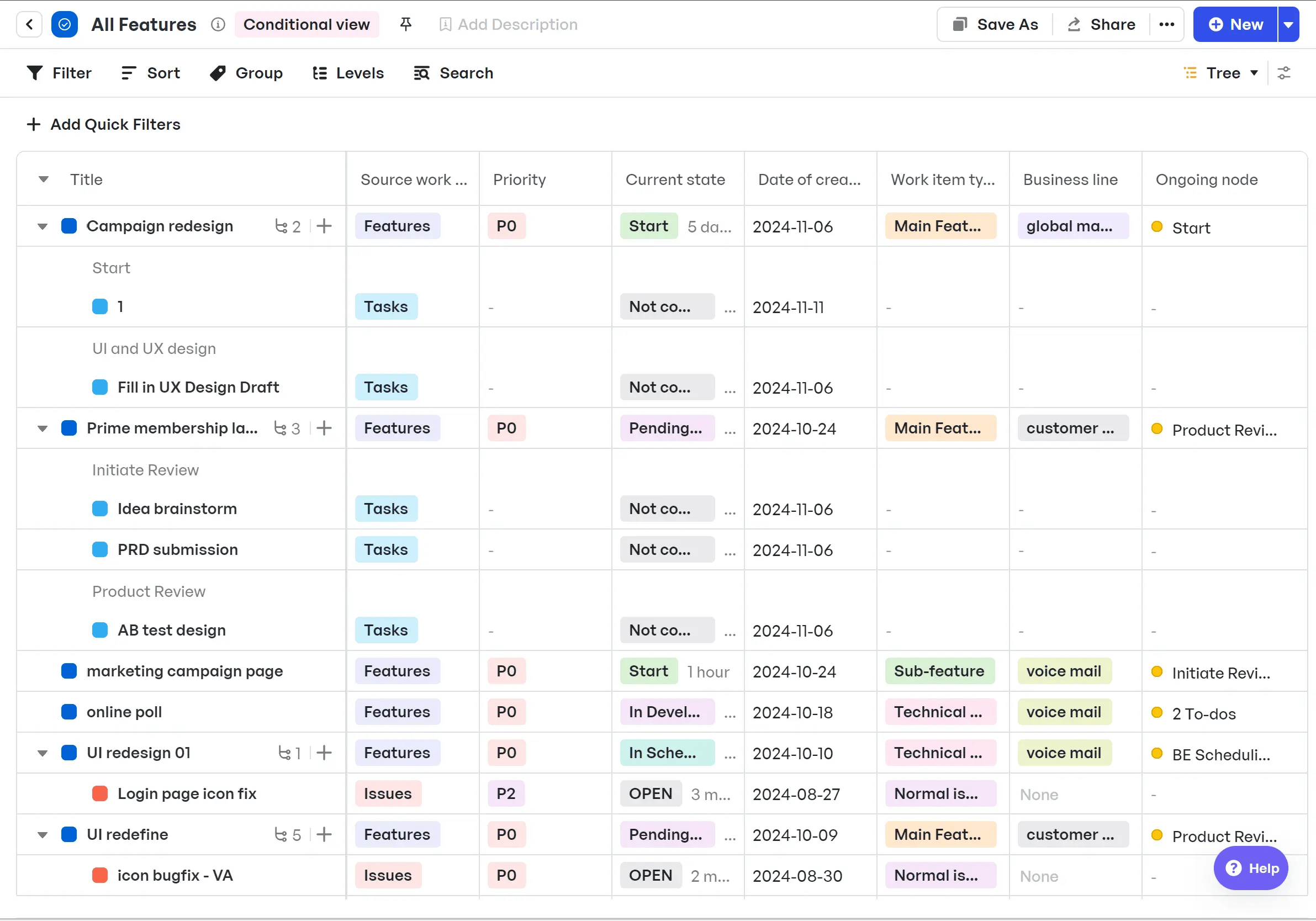 Visualize the product and sprint backlog
Visualize the product and sprint backlogTeams can move items between backlog, in-progress, and done columns and apply Scrum templates to quickly set up new sprints or projects, so everyone always knows what’s next without hunting for information.
Kick off your next sprint with the right Scrum template:
Scrum events (ceremonies)
Scrum’s events provide teams formal opportunities to plan, coordinate, review progress, and improve continuously:
- Sprint planning: The team defines the sprint goal and selects which backlog items to tackle.
Example: A retail team can plan a sprint around testing a new in-store display layout across two locations.
- Daily Scrum (Stand-up): A 15-minute Scrum meeting where team members share progress, plans for the day, and any blockers.
Example: A store operations lead can flag shipments that may delay the setup of a planned in-store promotion or product launch, requiring prompt coordination with the logistics team.
- Sprint review: The team demos what was completed and collects feedback from stakeholders.
Example: The team walks through photos and results from the new display rollout, capturing feedback from regional managers.
- Sprint retrospective: A reflection on what went well, what didn’t, and what to improve for the next sprint.
Example: The team discusses how last-minute inventory changes threw off timing and agrees to adjust planning buffers next time.
To keep ceremonies focused and efficient, most software development teams utilize built-in reminders and automation features within their product management tool.
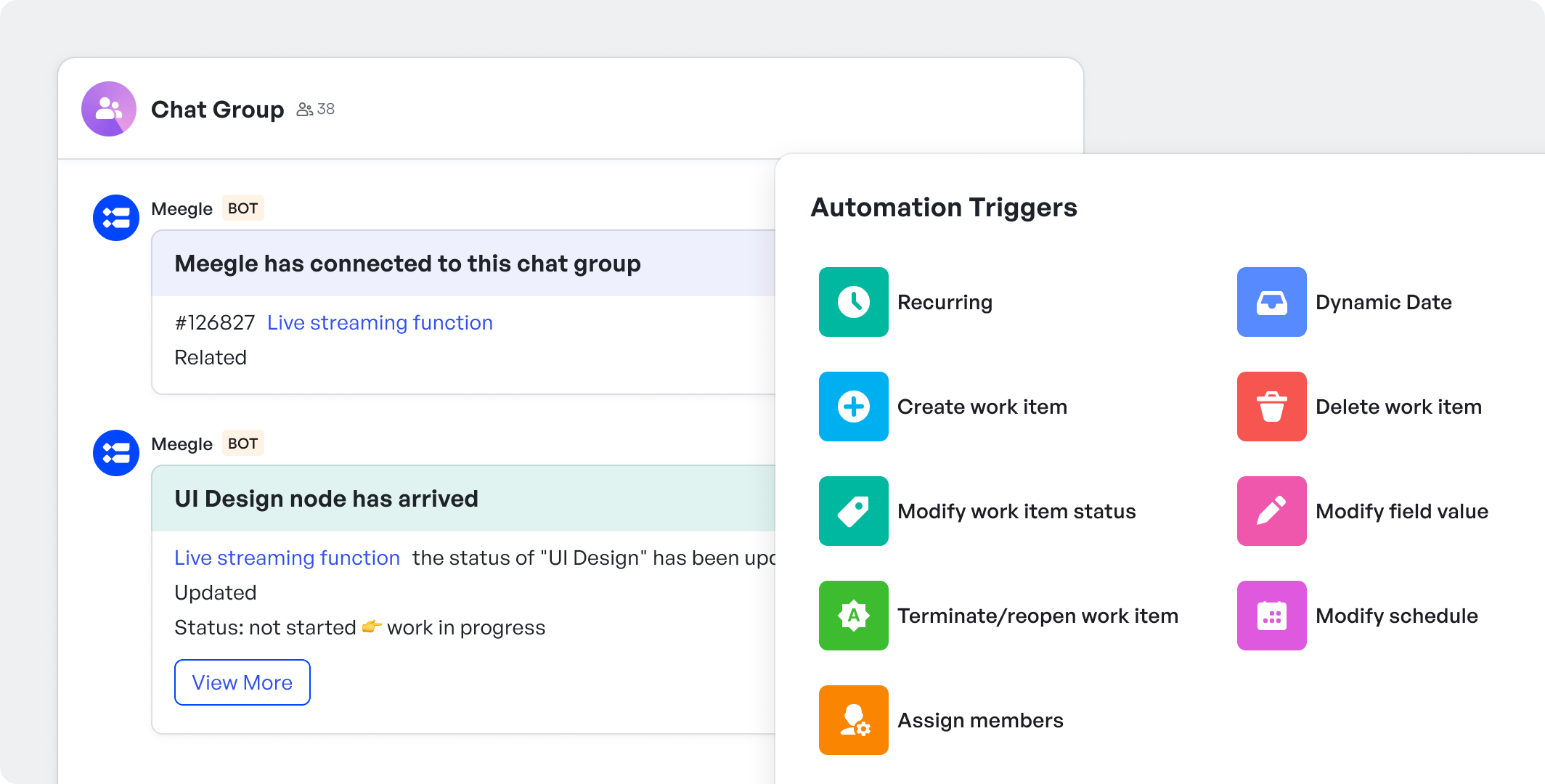 Built-in automation feature
Built-in automation featureBy automating routine updates and syncing timelines visually, teams stay focused on delivery, not admin work.
The Scrum process in practice
The Scrum process guides teams through a repeating cycle of planning, execution, review, and improvement. By following defined phases and using the right tools, teams can stay up to speed, deliver regularly, and learn with each sprint.
The 5 phases of Scrum
- Product backlog creation and refinement: The product owner collaborates with stakeholders to build and prioritize the backlog. Regular backlog grooming keeps items ready for upcoming sprints.
- Sprint planning event: The team selects backlog items for the sprint, defines a sprint goal, and breaks work into tasks.
- Sprint execution and daily Scrum meetings: Over 1–4 weeks, the team builds the increment, holding daily stand-ups to sync and flag blockers.
- Sprint review: Completed work is demonstrated to stakeholders. Feedback is collected to refine the backlog.
- Sprint retrospective: The team reviews the sprint and identifies improvements for future sprints using velocity metrics or tracked action items.
Suggested read: 👉How to Write a Project Proposal 2025
Sprint planning tools & techniques
Effective sprint planning depends on two things: clear goals and realistic estimates.
For accurate planning, Scrum teams often use story points to gauge how complex each task is. These are not measured in hours but in effort, which helps the team think about difficulty, not duration.
A popular way to assign story points is through planning poker, a product development game where team members each pick a number in private, then compare and discuss until they reach agreement. It’s a fast, fun way to get consensus and avoid bias from the loudest voice in the room.
Once estimates are in place, the Scrum team self-organizes, with members selecting tasks based on their skills and availability, and collectively committing to achieving the Sprint Goal within the sprint’s timebox.
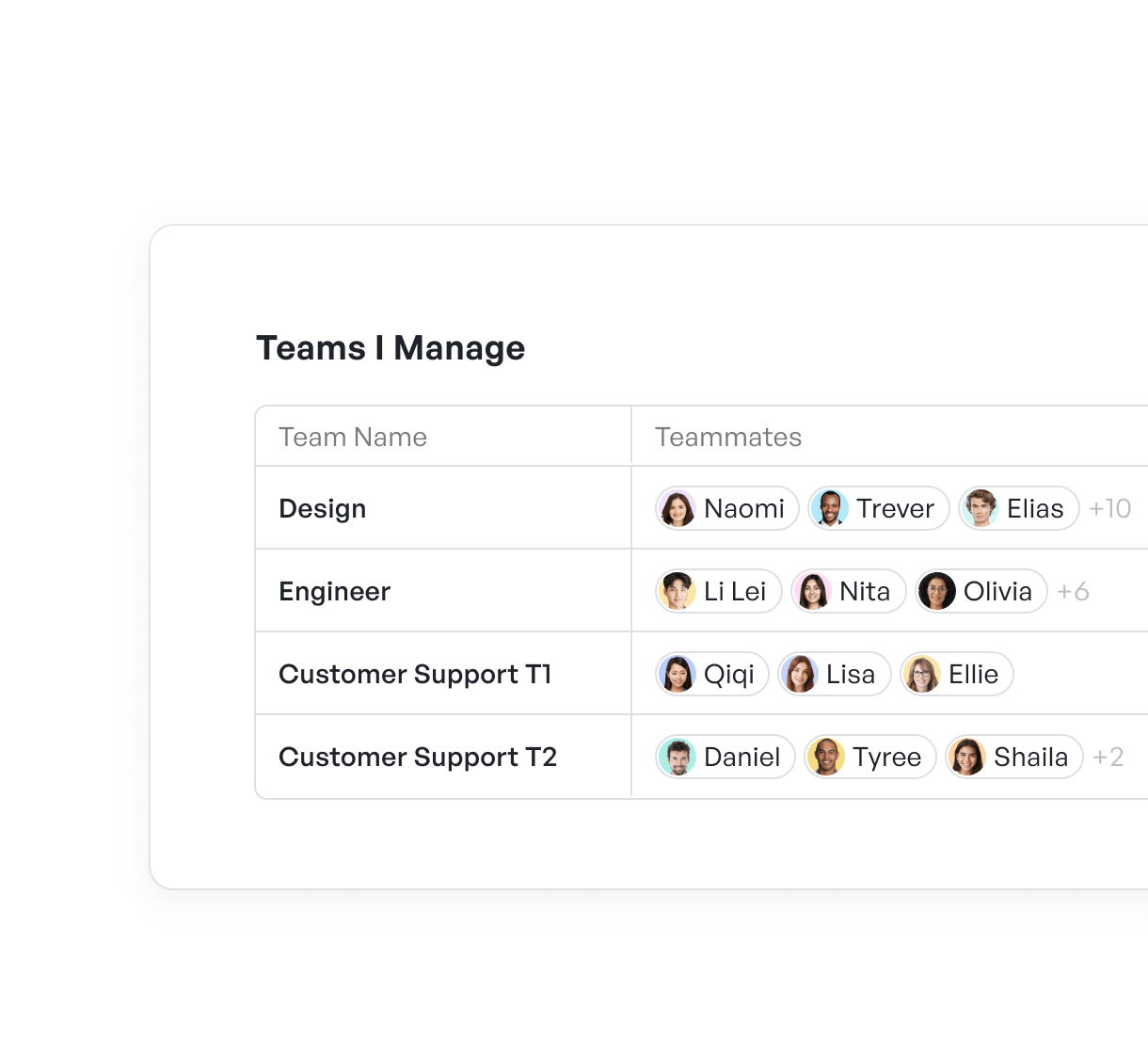 Assign roles
Assign rolesA helpful feature in Meegle is the member schedule, which shows everyone’s availability during planning.
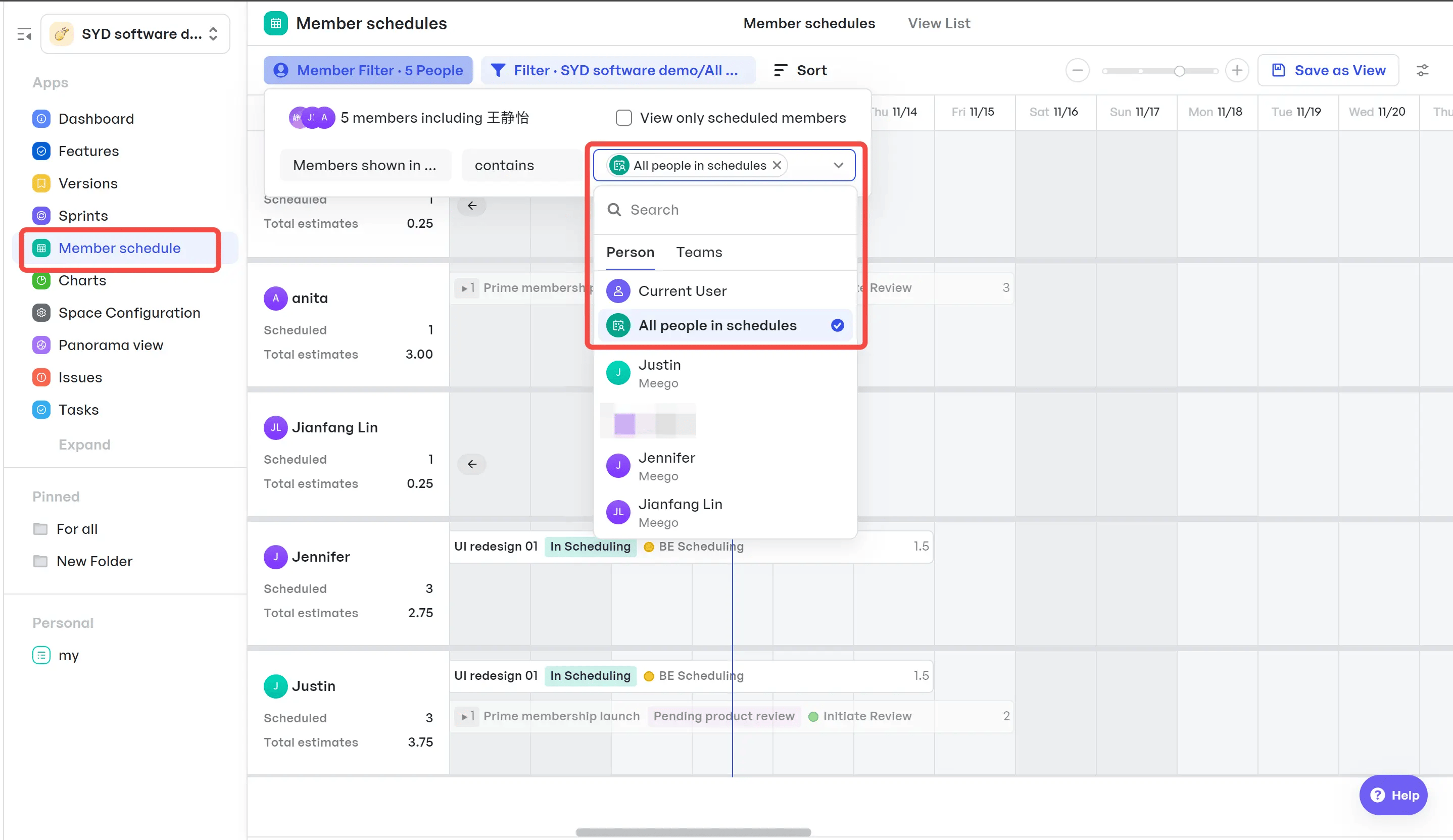 Member schedule feature
Member schedule featureFor example, if someone has three days free in a sprint and a task is estimated to take two person-days (PD), it's easy to see whether they can take it on, helping to match team members to tasks fairly and efficiently.
To keep planning organized, teams can create work items for each sprint or project and customize statuses such as “To Estimate,” “Estimated,” and “Ready for Sprint.”
 Work item feature
Work item featureIt becomes easy to see which tasks need estimation, which ones are ready to schedule, and which ones are approved for the sprint.
It’s important to align everyone with a clearly stated sprint goal. Something simple and specific that helps the team understand what they’re working toward and what success looks like by the end of the sprint.
Daily Scrum facilitation
Daily stand-ups, also known as daily Scrums, are quick check-ins that help team members keep the sprint on track. These Scrum meetings usually last no more than 15 minutes and focus on progress, plans, and blockers.
To keep things sharp and focused, many development teams use a simple, repeatable format:
- What did I do yesterday?
- What will I do today?
- Are there any impediments in my way?
This structure helps everyone stay on the same page without getting bogged down in detail. The goal isn’t to solve problems during the Daily Scrum but to raise visibility and create space for quick follow-ups afterward.
To support daily Scrum facilitation, Agile teams can use Kanban, Tree View and Table View to display tasks alongside delay labels that show exactly how many days each task is overdue.
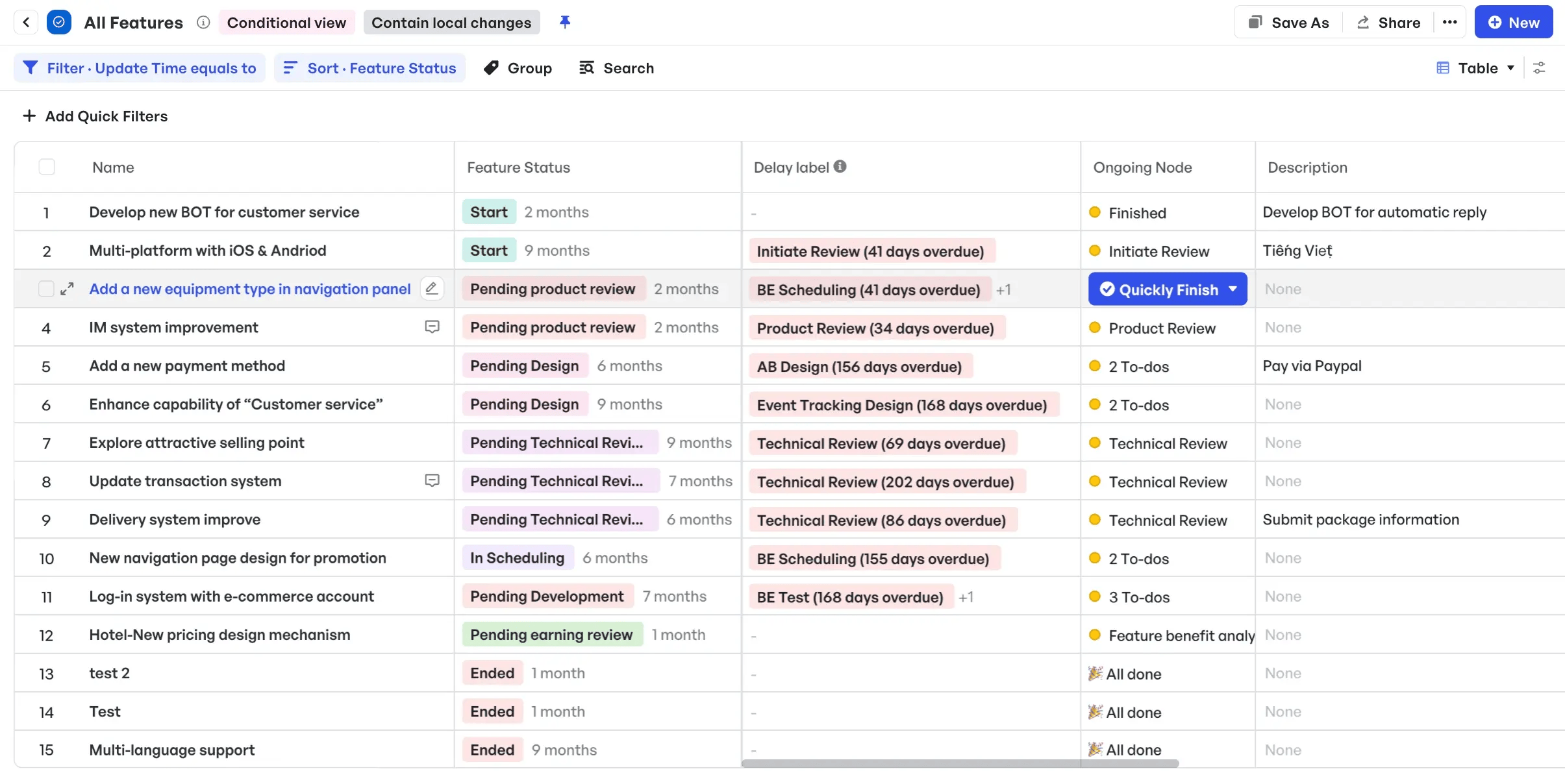 Table View and delay label to support daily Scrum facilitation
Table View and delay label to support daily Scrum facilitationAdditionally, automated delay notifications can be configured to alert relevant stakeholders promptly, ensuring that no issue goes unnoticed. That way, the Scrum master can take action early, rather than waiting for issues to escalate.
Scrum teams should stick to a strict time limit and “park” deeper discussions for later for better productivity. This ensures the stand-up stays fast, focused, and useful, without turning into a full-blown meeting.
Tracking sprint progress & reporting
Throughout the sprint, transparency and real-time insight help teams spot issues early and stay on track.
Scrum teams typically visualize a sprint in different views such as Kanban, Gantt, Tables, or Panorama, so they can see at a glance which items are in Backlog, In Progress, or Done.
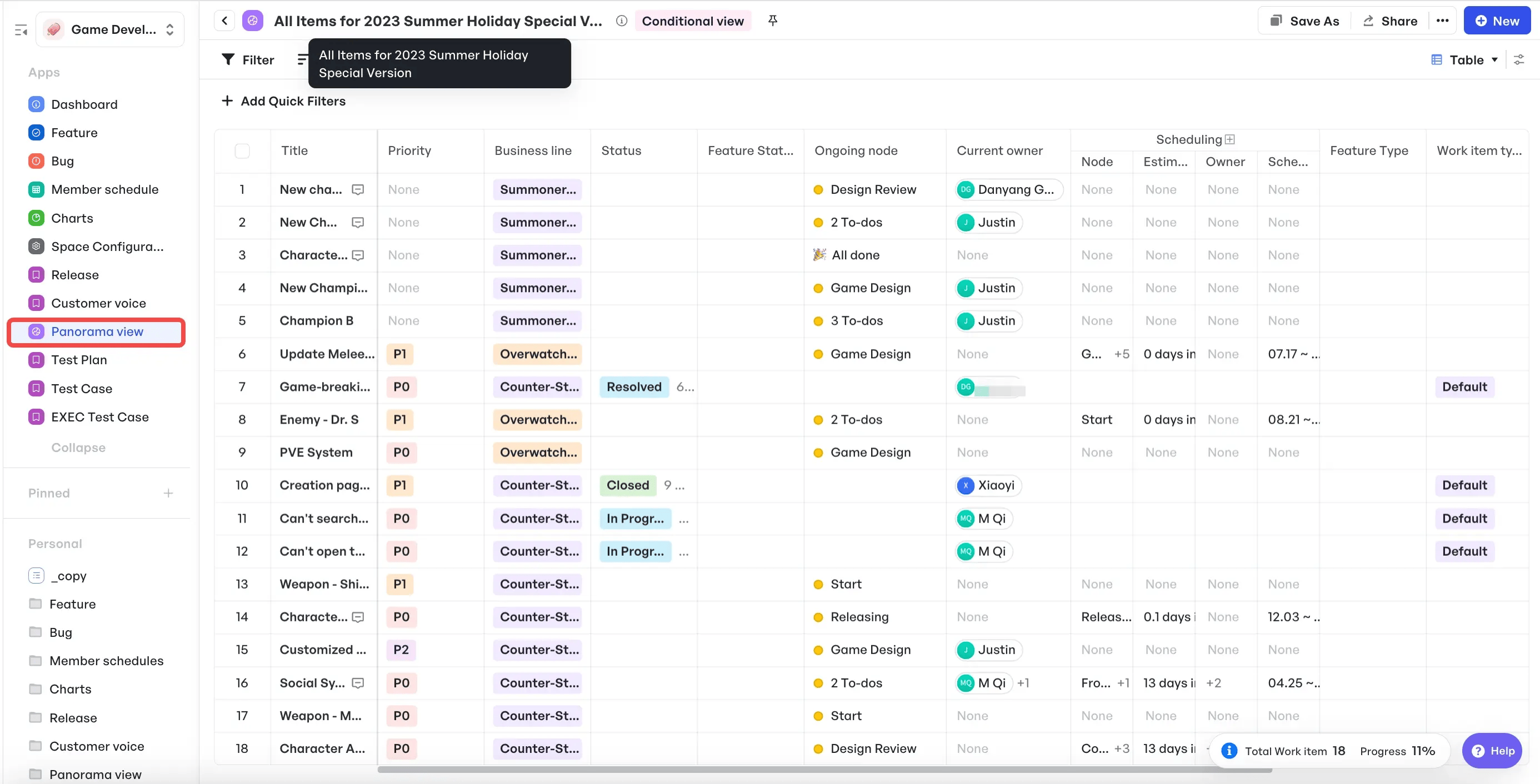 Panorama Views to visualize sprints
Panorama Views to visualize sprintsScrum teams can also use Meegle’s reporting dashboards to surface key metrics, for example:
- Burndown charts showing remaining effort over time
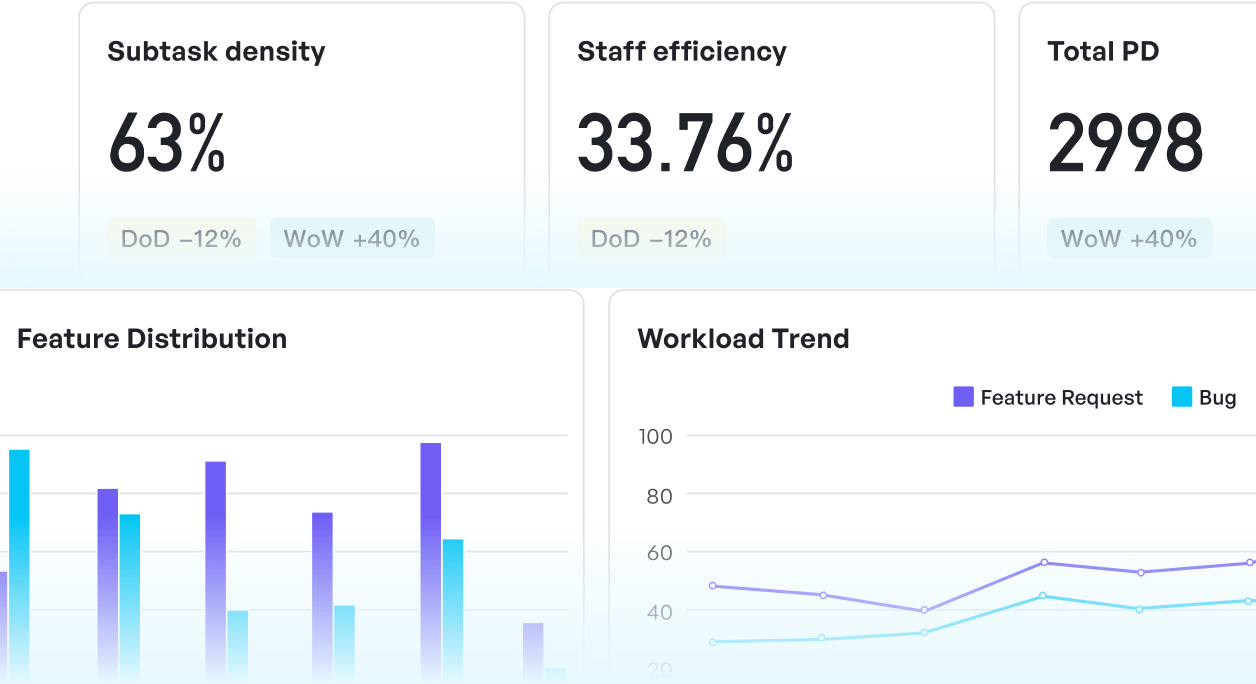 Meegle's reporting dashboards
Meegle's reporting dashboards- Sprint velocity charts tracking how many story points the team completes each sprint
- Cumulative flow diagrams highlighting bottlenecks across stages.
Built-in automations further improve reporting and reduce manual effort. For instance, you can:
- Trigger automatic status updates when a task moves columns
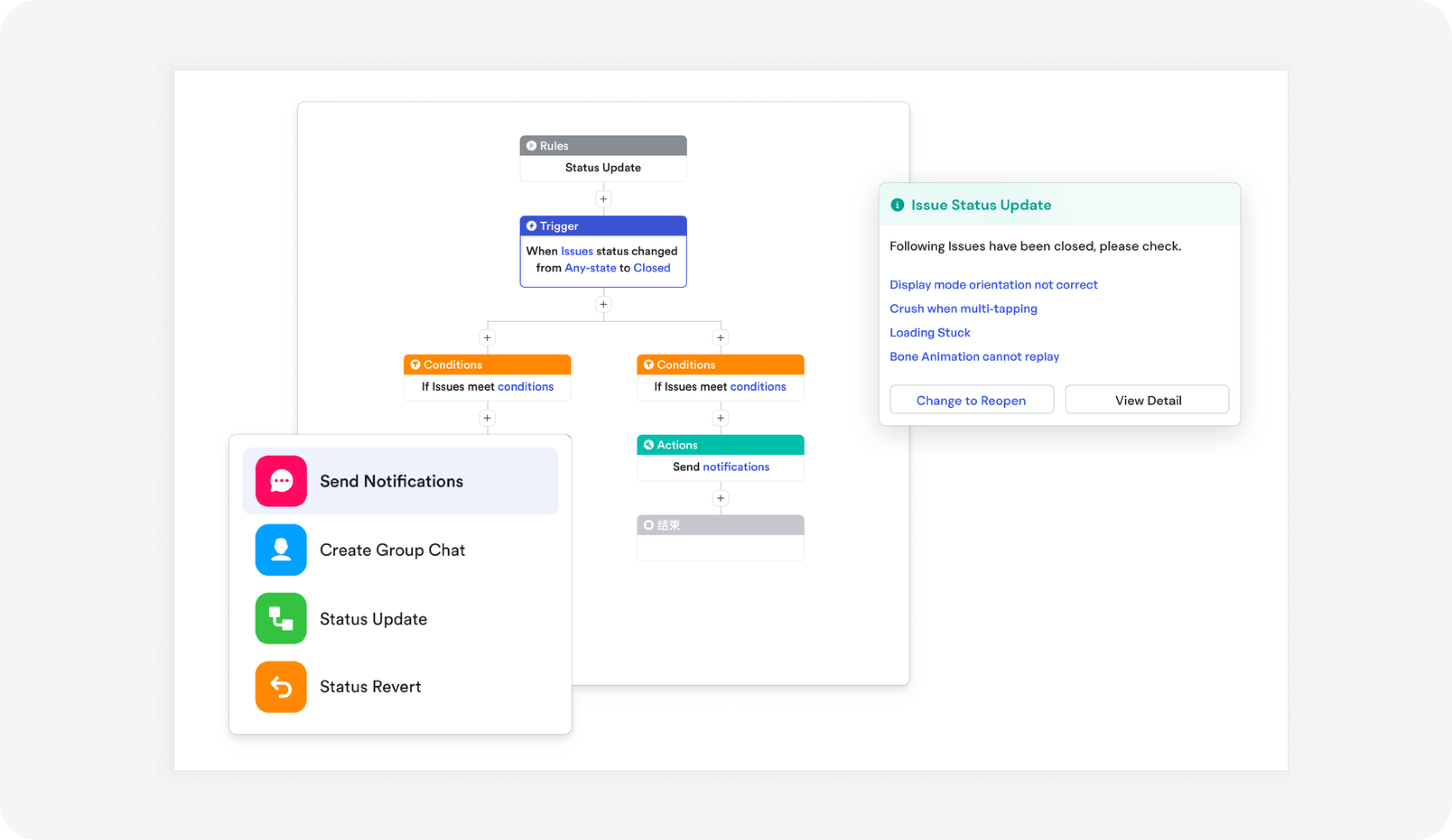 Setting triggers
Setting triggers- Send reminder notifications if work hasn’t started by its due date
- Generate end-of-day summaries of what shifted on the board.
Use regular feedback loops, like daily stand-ups, sprint reviews, and retrospectives to make sense of the data and guide real-time improvements.
Suggested Read:👉Project Tracking: How to Track Projects Effectively [2025]
Benefits of Scrum project management
Scrum is popular for a reason. It’s a practical framework for teams to stay flexible, focused, and efficient when carrying out projects. Here are some of the key benefits it offers:
- Adaptability to change: Scrum’s short sprints and regular reassessment of priorities make it easy for teams to respond quickly to changing market demands or customer feedback. The 16 State of Agile Report, previously cited, also found that 63% of teams use Scrum, reflecting how widely it helps organizations stay flexible and avoid wasted effort.
- Faster return on investment: By delivering working features every sprint, Scrum enables businesses to accelerate value realization and adapt plans based on empirical feedback, reducing time to market and costly rework.
- Improved team collaboration and motivation: Scrum encourages frequent communication and shared ownership. In the 2022 State of Agile report, 69% of respondents said Agile practices led to better collaboration across roles.
- Continuous improvement and better estimates: Regular retrospectives are instrumental in refining team processes. According to Broadcom's, The Impact of Agile Quantified study, teams that hold retrospectives after every sprint report 24% higher responsiveness and 42% higher quality compared to those that don't.
- Better transparency and stakeholder satisfaction: With Scrum values and artifacts, stakeholders always know what’s being worked on and where potential delays exist. This openness builds trust and ensures expectations stay aligned with real progress.
Common challenges in Scrum adoption
Yes, Scrum can improve how teams deliver value, but is adopting it always easy?
Many organizations ask similar questions as they shift to this new method of working. Being aware of these challenges helps guide teams more effectively:
- Resistance to change: Switching to Scrum often means letting go of familiar routines, causing unease. Both team members and leaders may hesitate to adopt new roles, meetings, and ways of working.
What to do? Start with clear communication about Scrum’s values and principles (as defined by Scrum Alliance). Use hands-on coaching, involve the team in the transition, and celebrate early wins to build momentum and buy-in.
- Insufficient understanding and training: Scrum may seem simple, but without proper training, teams often struggle with consistent application. Misunderstandings around roles, ceremonies, or artifacts can lead to frustration and reduced productivity.
What to do? Invest in comprehensive Scrum training and provide ongoing learning opportunities. Bring in certified Scrum trainers and establish mentorship programs to build confidence.
- Lack of leadership support: Without executive and managerial support, Scrum can't succeed. Teams need guidance, resources, and a culture that supports agility.
What to do? Engage leadership early by showing how Scrum enhances visibility and speeds up delivery. Highlight quick wins and measurable outcomes to gain long-term support.
- Poor product backlog management: A disorganized or poorly prioritized backlog misguides the development team, reducing focus and momentum.
What to do? Hold regular backlog refinement sessions. Train product owners in prioritization and ensure the backlog aligns with business objectives.
- Misalignment with organizational culture: Scrum works best in open, collaborative environments, but may clash with hierarchical or command-control cultures.
What to do? Introduce Scrum gradually through pilot agile projects and success stories. Emphasize trust, transparency, and collaborative practices that align with existing strengths.
Where Scrum doesn't work effectively
Scrum project management is powerful across many industries, but is it the right fit for every team and project? Here are some situations where organizations and team members struggle to implement Scrum effectively:
- Large, complex projects: When projects demand heavy upfront planning and strict record-keeping, Scrum's flexible, iterative approach can feel incompatible. Projects requiring detailed architectural blueprints or extensive regulatory documentation may need more traditional approaches.
- Highly regulated industries: In industries where compliance and formal approvals are mandatory, Scrum's lighter documentation requires careful adjustment. Banking, aerospace, and pharmaceutical sectors often need extensive audit trails that conflict with Scrum's emphasis on working software over comprehensive documentation.
- Non-negotiable scope and deadline projects: When scope and timeline are completely non-negotiable with zero flexibility for change, Scrum's adaptive nature becomes a disadvantage. Projects with firm regulatory deadlines or contractual obligations may require more predictable, sequential approaches to ensure compliance and delivery certainty.
Implementing Scrum project management with Meegle
TL;DR
- The Scrum framework has become the most widely used for modern teams aiming to stay agile, collaborative, and delivery-focused.
- As an Agile project management framework, Scrum supports iterative development of evolving products, especially in software development projects.
- It does this by organizing work into focused sprints and encouraging daily communication.
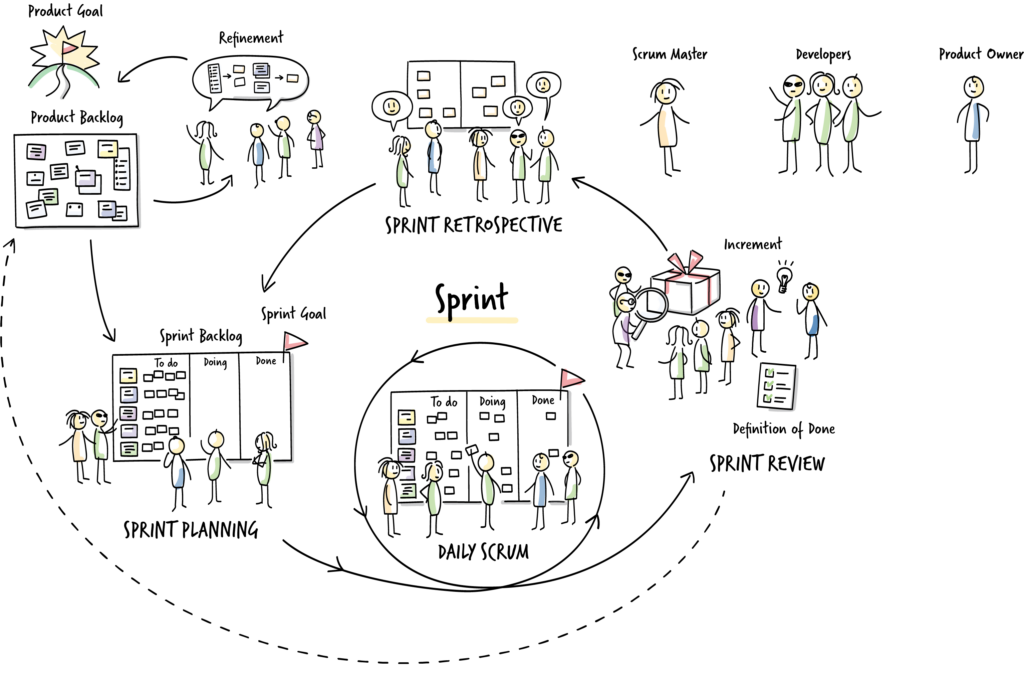 Illustration of the Scrum framework (source: Agile42.com)
Illustration of the Scrum framework (source: Agile42.com)- Meegle helps your Scrum team adopt and thrive within the Scrum environment with Scrum templates and intuitive, visual workflows tailored to iterative work.
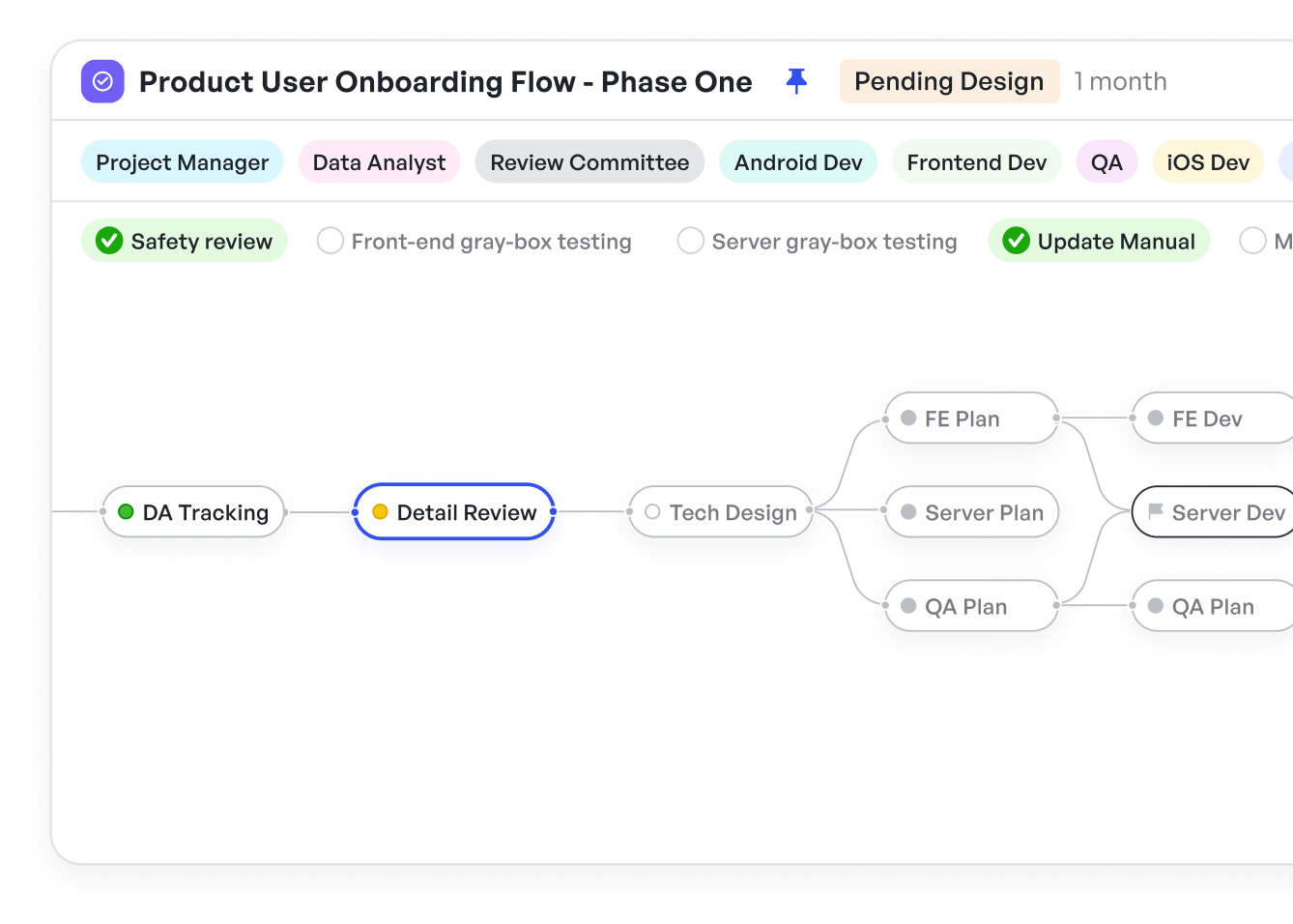 Meegle's Visual workflow
Meegle's Visual workflow- With customizable Kanban (Scrum boards) and other Views, teams can visualize sprint status from sprint planning meetings to sprint reviews and retrospectives, ensuring transparency and alignment.
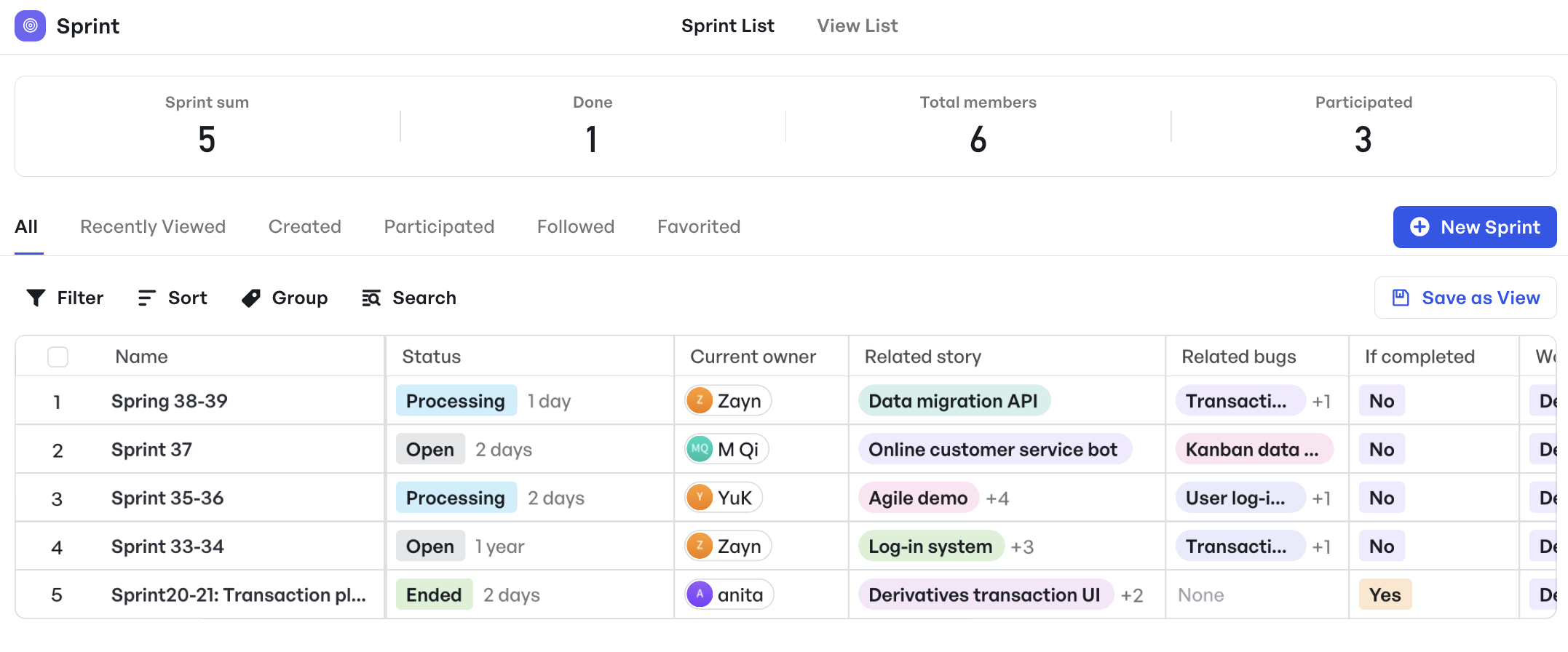 Prioritize tasks from the sprint
Prioritize tasks from the sprint- Each Scrum development team can use role-based access to define responsibilities and ensure team members stay in sync.
 Manage roles and responsibilities in Meegle
Manage roles and responsibilities in Meegle- Built-in automation and integration helps improve daily stand-ups, track sprint progress, and surface insights with real-time analytics, enabling continuous improvement.
Scrum works best when supported by tools that reinforce visibility, collaboration, and continuous improvement—exactly what Meegle is built for. Whether you're new to Scrum or optimizing an existing process, Meegle is designed to support your success across every sprint.
Drive better sprints and outcomes—try Meegle for your Scrum projects today.
FAQs
How long should a Scrum sprint be?
Most Scrum teams use 2-week sprints as the sweet spot. New teams often start with 1-week sprints to build momentum, while experienced teams may extend to 3-4 weeks for complex work. The key is consistency once you choose a length.
What happens if a sprint fails or isn't completed?
Incomplete sprint work returns to the product backlog for reprioritization. The team conducts a retrospective to identify blockers and adjust capacity planning. Never extend sprints – maintain the time-box and use learnings to improve future sprint planning and execution.
Can Scrum work for non-software projects?
Yes, Scrum works across industries including marketing, construction, healthcare, and manufacturing. Any project requiring iterative delivery, regular feedback, and adaptability can benefit from Scrum's framework. The key is adapting artifacts and ceremonies to fit your specific industry context.
What's the difference between a Scrum master and project manager?
A Scrum master coaches teams and removes impediments without authority over people or tasks. Project managers typically control budgets, timelines, and resources while directing team activities. Scrum masters serve the team; project managers manage the project scope and deliverables.
The world’s #1 visualized project management tool
Powered by the next gen visual workflow engineRead More
Check All BlogsStart creating impactful work today
